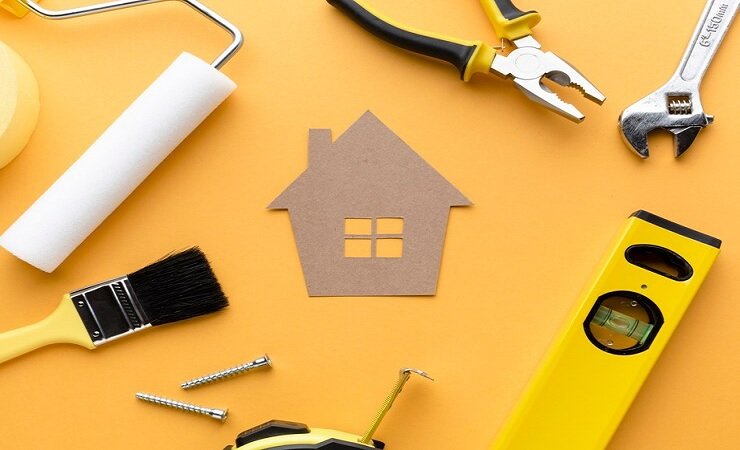Sustainable Home Decor: Eco-Friendly Tips for Stylish Living
With climate change and environmental sustainability at the forefront of public discourse, more and more people are seeking ways to reduce their carbon footprint and embrace eco-conscious living. This growing trend towards green living has now extended to home decor as well, with sustainable interior design emerging as a popular avenue to create beautiful living spaces while minimizing environmental impact.
Introduction to Sustainable Home Decor
Sustainable home decor refers to interior design and decorating practices that incorporate eco-friendly materials and methods to reduce the carbon footprint of a living space. It emphasizes the use of renewable, recycled and upcycled materials, energy efficiency, and integration of greenery to create stylish and eco-conscious interiors. Beyond environmental benefits, sustainable decor also enhances health and wellbeing by reducing indoor toxins and bringing nature indoors.
As sustainable living gains momentum, sustainable home decor has evolved into a prominent trend that allows you to makeover living spaces with a conscience. By opting for eco-friendly decor solutions, you can reduce waste, support ethical production systems, and create a healthy habitat, while still achieving your desired aesthetic. The good news is you don’t have to compromise on looks to make your home decor sustainable. In fact, green interior design introduces creative new possibilities for stylish living.
Incorporating Sustainable Materials
One of the key steps towards sustainable home decor is furnishing your living space with eco-friendly materials. Renewable and recycled materials like bamboo, cork, reclaimed wood, and even recycled glass make for beautiful and planet-friendly furnishings.
Bamboo is one of the most renewable resources, with the ability to rapidly regrow after harvest. Bamboo furniture and flooring lend a natural, earthy look while avoiding the need to cut down trees. Cork is another wonderful option made from the bark of cork oak trees. It is antibacterial, anti-allergenic, and easy to clean. Reclaimed wood salvaged from old buildings gives a charming rustic appeal to furniture and floors. Recycled glass, often from old bottles, is increasingly used in countertops, tiles, and other surfaces.
Beyond the typical furniture, sustainable materials can add greenery through the creative use of plants. Living walls, hanging botanical displays, and indoor garden rooms oxygenate indoor air while serving as lovely focal points. Natural textiles like cotton, linen, jute, and hemp also make for more breathable, nontoxic soft furnishings. By keeping sustainability in mind when selecting materials, it’s easy to create a consciously sourced living space.
Eco-Friendly Furnishings and Decor
When shopping for home furnishings and accents, it pays to check their sustainability pedigree. Seek out furniture that utilizes recycled or reclaimed materials, which prevents useful materials from ending up in landfills. Brands like IKEA are now offering upcycled collections made from scraps and unused stock.
For decor items like artwork, rugs, and soft furnishings, pick natural fibers over synthetics. Items woven from sisal, seagrass, organic cotton, and undyed wool embed less energy than synthetic counterparts. Handmade ethical crafts using local materials also make for sustainable accent pieces.
In place of mass-produced knick-knacks, decorate your shelves and surfaces with found items from nature or reused objects with character. Things like pebbles, seashells, and driftwood make for organic minimalist decor when artfully arranged. Repurposed items like old bottles, tins, and mismatched teacups lend quirky charm when put on display.
Greenery is a foolproof way to decorate sustainably. Potted plants, small gardens, and dried botanical arrangements enliven living spaces naturally. Opt for low-maintenance indoor plants like succulents, orchids, and air plants which purify indoor air. Creating a vertical garden is also an eco-friendly alternative to generic wall art.
Upcycling and Repurposing
For the ultimate sustainable statement, upcycle unwanted items into home decor or repurpose used goods in inventive ways. Rummage through thrift stores, garage sales, and your own attic for castaways with potential. With some imagination and DIY skills, you can reinvent old furnishings, frames, tins, ladders, crates, and more into conversation-starting decor.
Turn a vintage suitcase into a side table, a piano stool into a plant stand, or an old drawstring bag into a lamp shade. Upcycling retains an item’s inherent value while giving it renewed purpose. It also makes use of waste that would otherwise end up in landfills. In a way, upcycling allows you to create decor treasures out of perceived trash.
Repurposing everyday items as decor is another sustainable decorating tactic. Mismatched plates can become quirky wall art. Wine crates doubled up as shelves introduce rustic charm. Old jars lend a pretty touch when upcycled as vases. Even scrap wood boards can be sandpapered and used to display photos. With some creative repurposing, you can transform random finds from flea markets or around the house into functional decor.
Natural Textiles and Textures
When choosing materials for window treatments, bedding, rugs, or upholstery, natural textiles are a smarter eco-friendly option compared to synthetics. Fabrics like organic cotton, linen, jute, and hemp have less environmental impact compared to resource-intensive synthetic textiles like polyester. Natural fabrics also allow better air circulation, reducing indoor humidity and mold growth.
Unbleached, undyed natural textiles in neutral hues work beautifully in sustainable interiors. Hemp and ramie fabrics lend an earthy feel, while breathable linen is perfect for bedding. Jute and seagrass make charming sustainable rugs. When sourced ethically, wool from free-range sheep also offers a renewable fabric alternative.
Natural textures add cozy warmth to sustainable living rooms. Knit pillows in undyed wool or alpaca feature inviting tactile textures. Hand-woven throws and rugs in raw, unprocessed fabrics feel comforting underfoot. The raw, organic textures of these materials contrast beautifully with reclaimed wood, cement, or glass for an earthy yet modern aesthetic.
Bringing Nature Indoors
Plants are a simple yet highly effective way to underscore the sustainable ethos of your home decor. As well as cleaning indoor air, houseplants invite the outdoors in, creating a soothing, biophilic environment. Start by identifying the plants best suited to your home’s light conditions and your green thumb level. Foliage plants like Ferns, Philodendrons, and Monsteras are classics, while succulents make easy-care options.
Creative displays of houseplants, from gallery walls of trailingБотanicals to rustic planters on the floor, enliven living spaces as sustainably as they purify air. For plant walls, use recycled bottles or old pots attached to upcycled ladder frames. Repurposed crates or boxes planted with air plants also furnish spaces with oxygenating greenery.
Beyond houseplants, weave broader botanical accents into your sustainable home decor. Natural baskets add organic charm. Dried flowers and grasses lend textural beauty in vases. Fruit bowls piled high with lemons bring fresh fragrance. A minimalist stone Zen garden makes a serene focal point. There are so many ways to reflect nature indoors through conscious home decor choices.
Sustainable Home Lighting and Energy Efficiency
Lighting and electronics constitute a significant share of energy consumption in homes. To reduce your carbon footprint, invest in energy-efficient LED bulbs which use up to 80% less energy than conventional bulbs and last years longer. Smart lighting systems with motion sensors and schedules further optimize electricity use.
During daytime, optimize natural lighting through conscious interior design. Keep window treatments light and minimalist to allow sunlight in. Decorate with light, reflective colors that brighten up living spaces naturally. Add mirrors and glass to balance light distribution.
Seek out greener electronics and appliances certified by Energy Star. Smart power strips automatically switch off standby electricity drain of gadgets. Choose non-toxic, low-VOC paints and finishes to reduce indoor air pollution when decorating. Sustainable lighting and electronics choices make for an eco-friendly and healthier habitat.
Infusing Sustainability into Home Decor Aesthetics
Sustainable home decor does not equate to bland or boring interiors. On the contrary, eco-conscious materials lend themselves beautifully to stylish, design-forward living spaces. Sourced ethically, natural materials like renewable bamboo, recyclable plastic, reclaimed wood, and repurposed textiles create spectacularly original decor schemes.
For eclectic charm, mix upcycled vintage finds with sleek midcentury silhouettes and pops of color. Raw wood finishes, exposed brick, and industrial-style lighting strike a sophisticated warehouse vibe. For bohemian flair, layer natural textiles with eclectic patterns and houseplants galore.
Scandinavian minimalism is another aesthetic that partners seamlessly with sustainable principles through its emphasis on natural materials, unfussy lines, and minimalism. By blending materials thoughtfully, embracing multipurpose furniture, and opting for quality over quantity, it’s easy to design stunning interiors while upholding environmental values.
Conclusion
More than just a passing fad, sustainable interior design is shaping up to be a fundamental component of modern eco-conscious living. Renewable, natural and upcycled materials, along with considered integration of nature, offer means to craft living spaces that are aesthetically appealing, ethically sourced, and ecologically positive.
Adopting a sustainability-focused approach to interior design encourages mindful consumption while doing your bit for the planet. As sustainable decor gains mainstream popularity, an increasing range of eco-friendly materials and furnishings are becoming available to date any decor scheme. With some imagination and commitment to green principles, you can easily curate aconscious, stylish and healthy living space.











